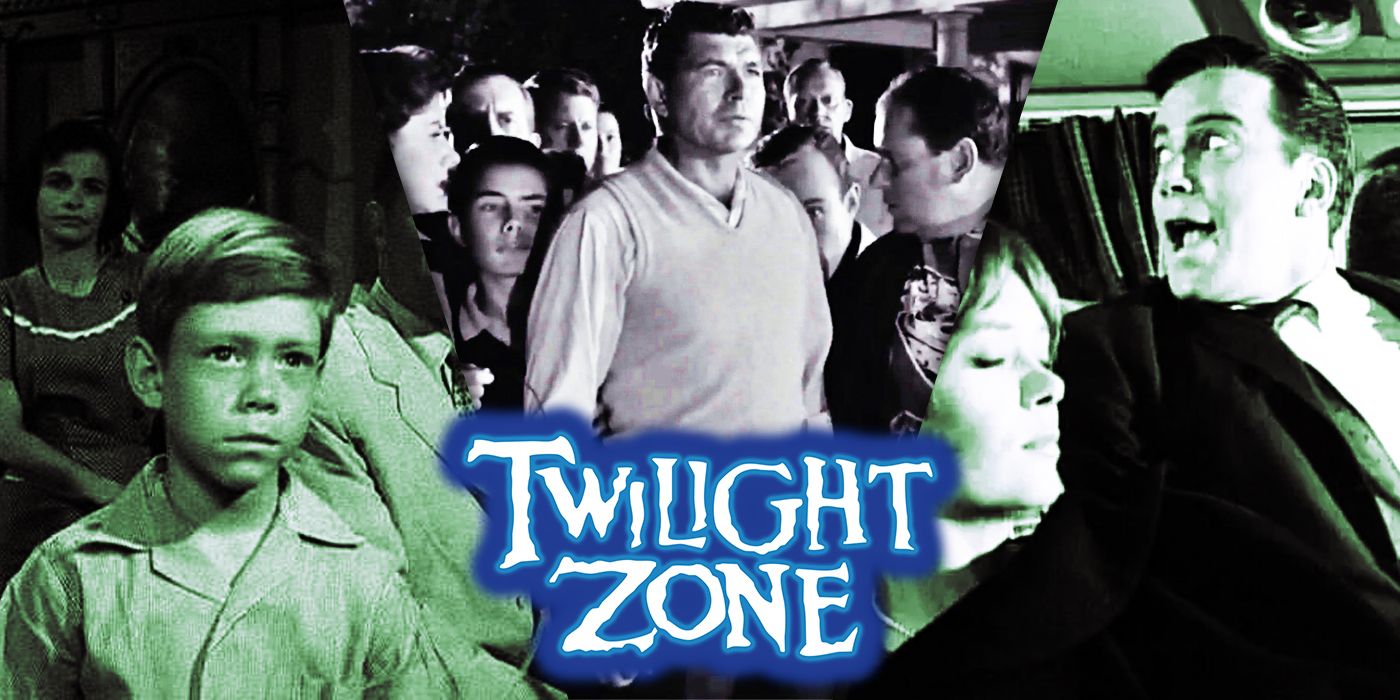
Only a small number of TV shows can boast the enduring appeal of this one, which remains just as relevant and thought-provoking today as it was more than six decades ago. This longevity is due in part to the exceptional production quality and the masterful storytelling that creator Rod Serling was known for, laced with his signature irony. However, the show also managed to vividly portray the darkest aspects of human nature in a memorable way, frequently surpassing the constraints of budget and special effects.
Many troubling episodes in this series don’t depend on supernatural creatures or scary monsters, but instead expose our own flaws, which remain relevant even after many years. These episodes delivered a powerful impact that lingered long after the final plot twist. Here are some of the most unsettling episodes from the series. Some use surprising plot twists to create fear, while others employ shocking visuals or fundamental themes to scare viewers. Regardless, they have all played a significant role in the show’s lasting impact and remain just as chilling today as they were when they first premiered.
Richard Donner Finds a Haunting Atmosphere (Season 5, Episode 34)
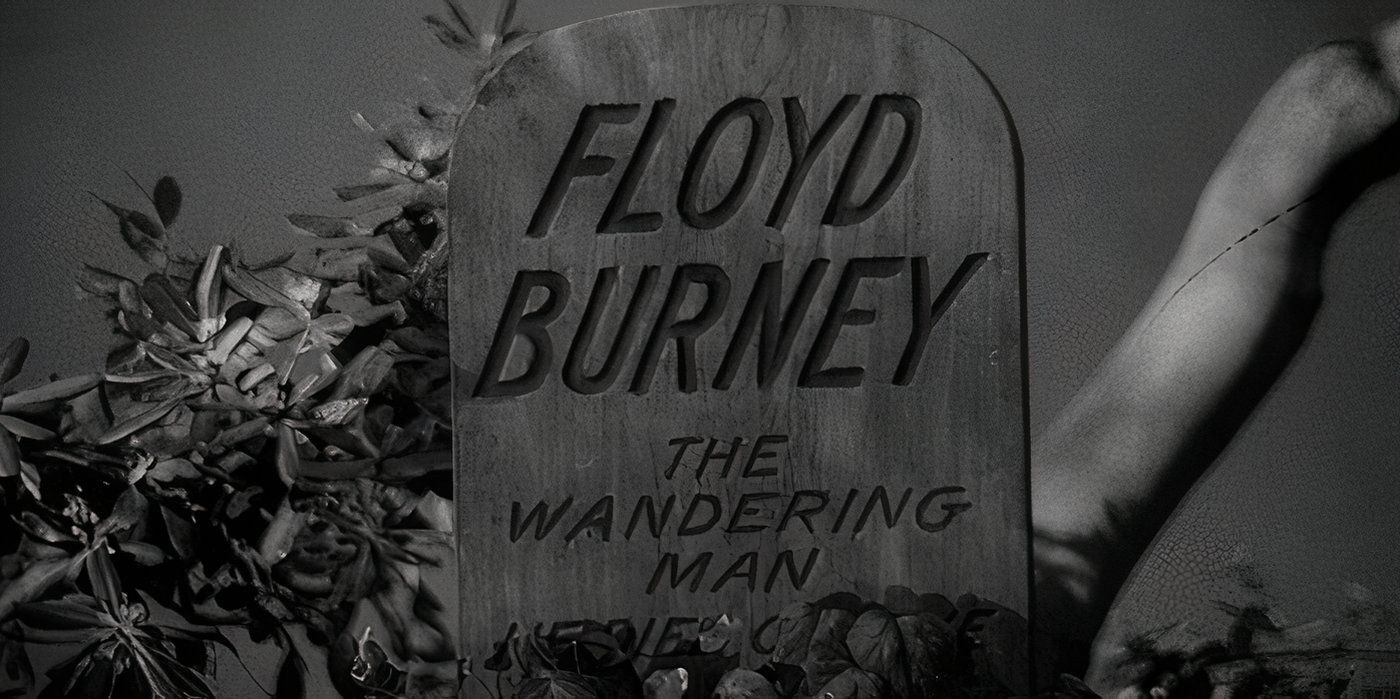
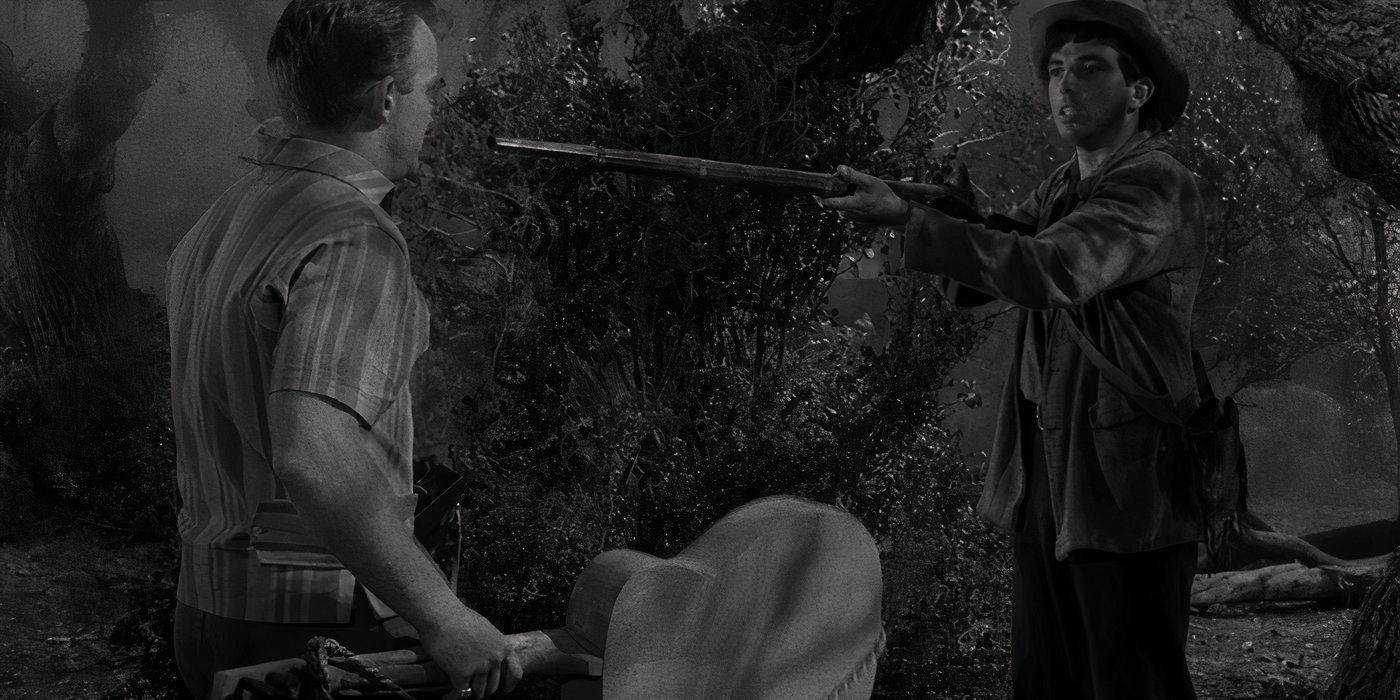
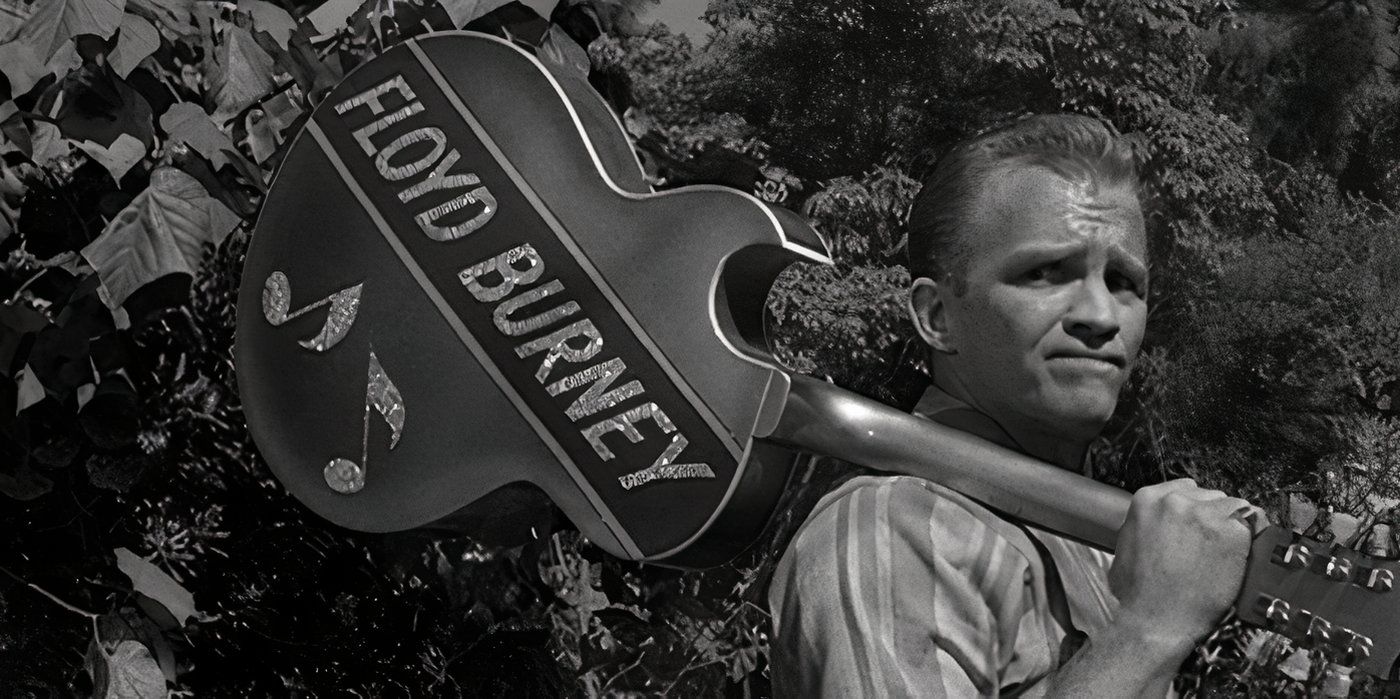
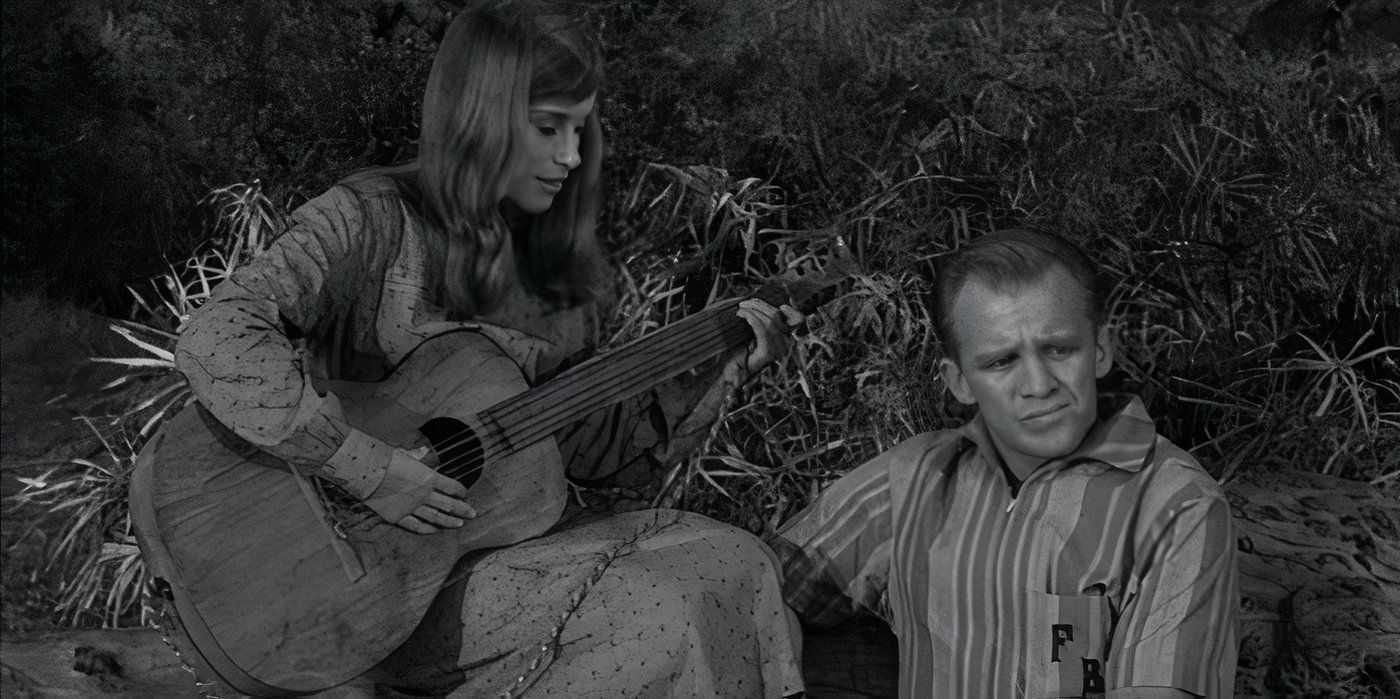

Director Richard Donner proved an ideal fit for The Twilight Zone, directing several of its final outstanding episodes before embarking on a distinguished career in filmmaking. His work spans projects like the original Omen, The Goonies, and Superman: The Movie with Christopher Reeve. “Come Wander with Me” was one of six Twilight Zone episodes he directed and the penultimate episode to air. The story adopts a deliberately dreamlike quality as a famous singer ventures to a quaint town in search of inspiration, but instead gets entangled in the song he’s trying to create.
The device doesn’t function perfectly, occasionally generating mystery that becomes puzzling instead. Yet, Donner manages to stay focused, and although there are some rough spots, they eventually create an eerie, Lynchian-like ambiance. This distinctive mood sets “Come Wander with Me” apart from other episodes in the series, leaving a lasting impression even after several decades since its initial airing.
The Martian Setting Is Less Important Than The Chilling Human Truth Beneath (Season 1, Episode 25)
The story “People Are Alike All Over” openly embraces its status as a fable. It doesn’t strive for scientific precision, instead portraying Mars as inhabited, a fact that was known to be false during the time of its publication. This inaccuracy, however, does not detract from the story or its message, which focuses on human nature. The tale carries an eerie undercurrent that goes beyond the details of the plot, where Roddy McDowall’s astronaut encounters a supposedly friendly and sophisticated Martian civilization after crash-landing.
One intriguing rephrasing could be: “One of the most memorable twists in ‘The Twilight Zone’ series unfolds when they present him living in a house that seems like an ordinary Earth home, but it later reveals to be a zoo enclosure instead. The episode concludes with him sorrowfully observing his former friends transforming him into an animal captive. On its surface, it’s effective, but as you delve deeper into the title’s meaning, it grows increasingly ominous and unsettling. Such dehumanization can only be carried out by one human against another.
The Famous Twist Comes After a Terrifying Ordeal (Season 2, Episode 15)
The Invaders” primarily relies on visual storytelling for most of its duration, with Rod Serling’s opening monologue being the only spoken dialogue until the end. This episode, however, is exceptionally chilling within the scope of the series, as Agnes Moorehead portrays a solitary elderly woman who encounters the occupants of a small extraterrestrial spacecraft. The unexpected twist comes when it’s revealed that the saucer is actually from Earth and the old woman hails from an alien world.
This is an outstanding portrayal of a supposed initial encounter that tragically goes awry. It serves as a poignant reminder about the essence of fear, demonstrating how human impulse to act hastily can lead to catastrophe. The narrative is cleverly disguised as a traditional haunted house tale, featuring a woman bravely confronting an ominous and terrifying entity in darkness. Douglas Heyes’ exceptional direction and Jerry Goldsmith’s powerful musical score elevate it to one of the series’ most frightening episodes, leaving audiences on edge before the shocking climax.
The Answers May Be Worse Than The Questions (Season 3, Episode 14)
As a movie critic, I found myself captivated by the theatrical roots of Rod Serling, who masterfully crafted episodes for “The Twilight Zone” that are equally compelling on stage. One such example is the enigmatic piece titled “Five Characters in Search of an Exit”. This production unfolds like a labyrinthine play, its eccentricities making it akin to avant-garde theater.
Intrigue arises from the peculiar predicament these characters find themselves in – they’re mysteriously confined within a barren pit. Despite donning various costumes – an army major, a ballerina, a vagabond, a jester, and a bagpiper from Scotland – they can’t recall any moments prior to their arrival here. The questions that ensue are as intriguing as the circumstances themselves.
In his opening speech, Serling expresses that we won’t solve the nightmare, but instead, we’ll unravel it, suggesting that the questions themselves can induce fear. The characters grapple with their perceived powerlessness, hoping for answers to regain control. However, they find no relief, as the twist reveals – they are all dolls in a barrel meant for holiday donations at a local orphanage. Even the possibility of becoming a cherished toy can’t alleviate the chilling realization that they are conscious items. The lack of comfort from answers makes questioning itself a frightening endeavor. These types of fears linger, creating enduring scares.
The Story of Identity Theft Feels More Pertinent Than Ever (Season 3, Episode 27)
The most effective episodes in “The Twilight Zone” often feature straightforward plotlines that swiftly lead viewers into disquieting territories. In one such instance, a story unfolds about a bank executive who, after a night of revelry, discovers his personal identity has vanished. His identification and belongings are missing, neither his wife nor colleagues recognize him, and he is eventually institutionalized, claiming to be someone who doesn’t exist in reality.
In this episode of “The Twilight Zone,” although the idea of identity theft was unheard of during its production, it remarkably foreshadows the devastating impact such an event can have on a person’s life. The exact source of his predicament remains unexplained, leaving open the chilling possibility that he may be suffering from madness. The episode’s signature twist adds to the terror, ensuring “Person or Persons Unknown” continues to haunt viewers even today.
Serling Uses Authoritarianism to Disect Human Nature (Season 2, Episode 29)
In simpler terms, The Twilight Zone often criticized totalitarian regimes, using them as a backdrop to explore various social issues. One such episode, titled “The Obsolete Man,” portrays a future society where extreme conformity, reminiscent of George Orwell’s work, is the norm. In this episode, a humble librarian, who was a recurring character on the show (Burgess Meredith), is sentenced to death for possessing books after the state has deemed them unnecessary. As the state official arrives to watch his execution on live television, he finds himself locked in with the librarian, facing the same fate.
What unfolds next is both unavoidable and disquieting. The chancellor, in a fit of terror, pleads to be let go. The librarian grants his request, only to meet a tragic end himself. The chancellor’s cowardice comes to light, leading to his dismissal by a panel. In the poignant conclusion, they attack him and brutally kill him with their bare hands. This brutal act serves as a stark reminder of the nature of their administration and the all-too-human flaws that breed it.
The Story Is Reasonably Quiet Until the Final Shot (Season 2, Episode 8)
In many instances, the success or failure of an episode in “The Twilight Zone” depends solely on its ending, which is often the defining factor. The chilling episode “The Lateness of the Hour” stands out among the series’ scariest due primarily to its final image. This episode revolves around the adult daughter of an elderly inventor and his spouse who reside in a mechanized mansion with robotic attendants. Feeling trapped, she yearns for freedom, yet discovers the reason she can’t escape – she is a robot, designed to provide companionship for the childless couple.
One unique aspect of ‘The Lateness of the Hour’ is that it’s among the rare Twilight Zone episodes filmed on video, an attempt that ultimately didn’t succeed. However, this doesn’t take away from the haunting twist. The family, struggling to accept their ‘daughter’ as artificial, choose to shut her down and reprogram her as a maid instead. The episode ends with her offering her ‘mother’ a massage and speaking in a cold, robotic tone. The casualness of their decision to reprogram her is unsettling, but the image of their once-expressive ‘daughter’ turned into a domestic version of a Stepford Wife is disturbing enough to keep one awake at night.
A Condemned Man May Be the Only Real Person in the World (Season 2, Episode 26)
In numerous aspects, “Shadow Play” is essentially predictable, as it presents a question whose solution is almost inevitably set by the characteristics of the series. A man sentenced to death insists that everything around him is merely a recurring dream. Upon his death, he will supposedly revisit the moment of his verdict and live through it all over again. At first, he appears insane, but intriguing details hint at the possibility of him being correct, leading some individuals to ponder the potential consequences if he’s telling the truth.
The episode concludes in an expected manner – if it weren’t so, it wouldn’t be typical of “The Twilight Zone” – but this expectation actually amplifies the tension rather than lessening it. The build-up to the execution carries the eerie certainty of a nightmare, where all seem aware of what’s impending and yet are powerless to intervene. Director John Brahm masterfully transforms what could have been a weakness into a strength, making the climactic revelation even more disquieting in the process.
Robby the Robot Guest Stars in a Surprising Chiller (Season 5, Episode 8)
In the episode “Uncle Simon” from the Twilight Zone, it’s Robby the Robot, initially known for his appearance, that stands out. This charming machine remained popular long after its debut. Interestingly, however, the show replaces Uncle Simon’s head with a more comedic one, which surprisingly amplifies the eerie atmosphere of the episode. The titular character is none other than an unkind, domineering brute who finds pleasure in tormenting his innocent niece.
In her case, she’s merely interacting with him for the sake of inheriting when he passes away. Yet, an unexpected twist awaits: a robot that gradually adopts his personality. She must maintain contact with it or forfeit the inheritance, thus condemning herself to a wretched, joyless existence in pursuit of material wealth. As one considers this predicament, it grows increasingly unsettling. It’s chilling to realize that Simon has constructed a robot solely to vex his last living kin, and she’s ensnared by her avarice instead of relinquishing the fortune and reclaiming her freedom.
The Effects Hold Up, But It’s the Implications That Terrify (Season 2, Episode 29)
In “The Twilight Zone,” mysteries are skillfully woven to capture audiences’ attention, leading up to shocking final revelations. The more effectively it can build tension with its unexpected endings, the greater the impact. “Stopover in a Quiet Town” is an excellent demonstration of this technique. After a night of heavy drinking, a couple finds themselves as the only inhabitants of a small, peculiar town. As they delve deeper into their surroundings, everything seems increasingly bizarre. For instance, they discover that the trees are fake and the train they believe will transport them away merely loops back to the same station.
In a captivating twist, this episode is as gripping as many iconic episodes from The Twilight Zone. It makes the viewing experience rewarding merely by the potential scenarios it presents. Two characters are taken by colossal extraterrestrial beings, kept in a terrarium similar to an aquarium, and given as pets to their young offspring. The show effectively establishes this concept with some impressive special effects that stand the test of time. However, it’s the hint of what could befall them next that sends shivers down your spine. Occasionally, children are not adept at caring for goldfish, leading to their demise.
Lee Marvin Helps Spin a Spooky Yarn (Season 3, Episode 7)

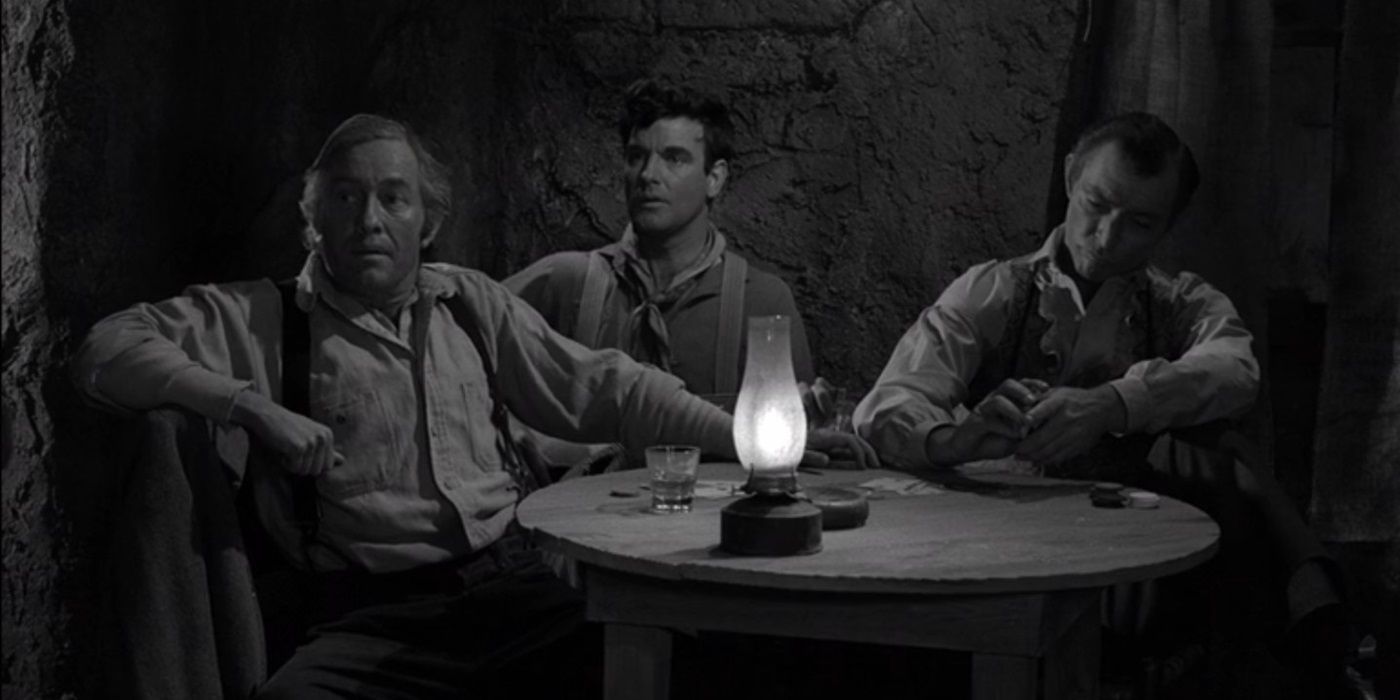

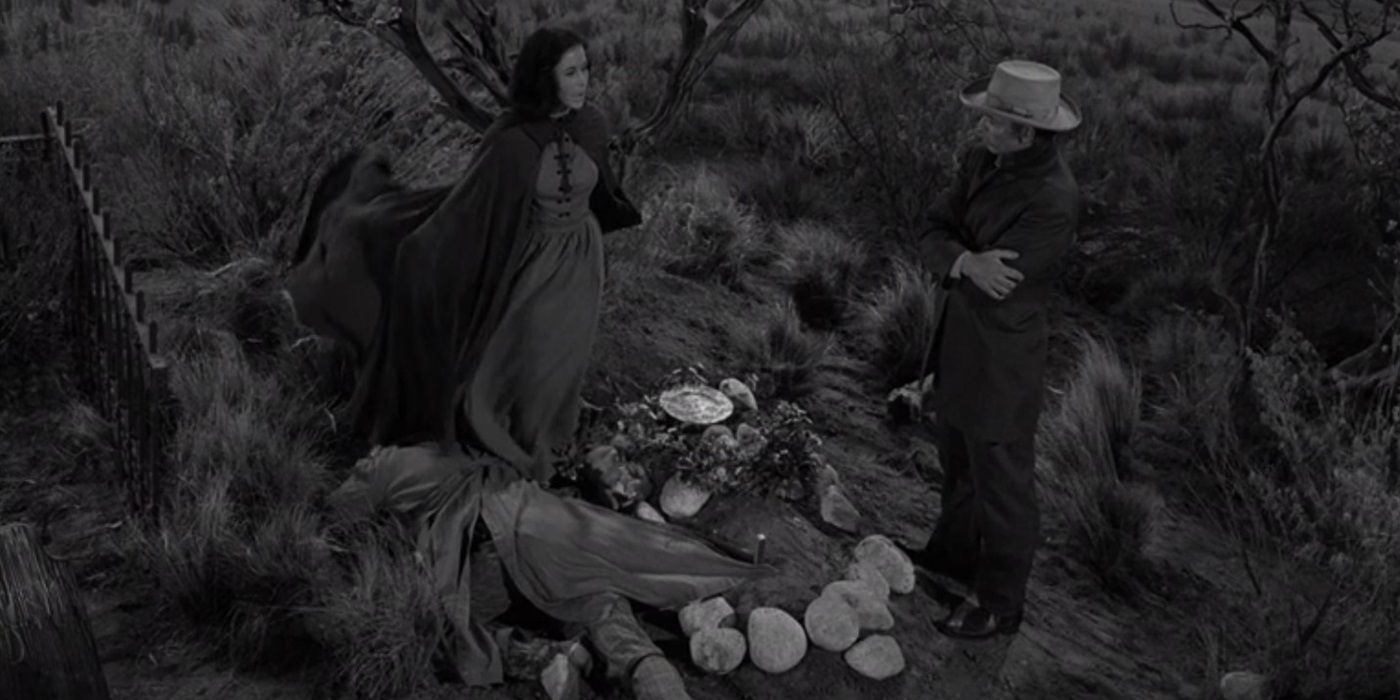
Among its many thought-provoking episodes, “The Twilight Zone” particularly enjoys startling its audience, as seen in the episode titled “The Grave“. This stands out as one of the series’ excellent Western installments, which were highly popular when “The Twilight Zone” was first aired. Notably, it stars two iconic figures from the Western genre. Lee Marvin portrays a bounty hunter who enters a small town seeking an outlaw, only to discover that the locals have already executed him. Prior to his death, the outlaw had challenged the bounty hunter to visit him on his grave, and now the man must honor this challenge or risk being called a coward.
The Grave” demonstrates that sometimes the most terrifying tales are those with the simplest structures, offering a chilling narrative and an unsettling climax primarily dependent on the audience’s imagination. This is reminiscent of traditional campfire stories such as “The Hook,” where the unexpected twist is what makes it scary, and yet, its execution is so skillful that it remains effective even after repeated viewings. Accompanied by Lee Van Cleef portraying one of the townsfolk, it’s a chilling supernatural Western that manages to catch unsuspecting viewers off guard.
Evil Toys Got Their Start on Serling’s Series (Season 5, Episode 6)
As a devoted cinema enthusiast, I’ve got to give credit where it’s due – evil toys have been chilling us to the bone in modern horror flicks, but let me tell you, The Twilight Zone was way ahead of its time on this one. Pioneering works like “The Dummy” laid the groundwork, but the series really pushed the boundaries when it revisited the concept in its final season with “Living Doll.” This chilling tale follows an abused girl who finds herself in a terrifying predicament with her new talking doll, Dollie, taking issue with her cruel stepfather.
In a twist of events, I find myself drawn as the pivotal figure in this intriguing tale, but the true struggle unfolds between Telly Savalas’ complex father character and an apparently harmless toy that seems incapable of wielding a weapon. The mental tug-of-war is chilling, yet the family dynamics portrayed are far from fabricated. As Serling poignantly mentions in his concluding narration, the doll serves as a protector. It’s the adults who embody the true monsters, a recurring motif that the series frequently revisited.
Suggestion, Not Reality Holds the Key to Its Horrors (Season 2, Episode 5)
The Howling Man” serves as another testament to the remarkable feats achievable by ‘The Twilight Zone’ even on a modest budget. A man finds himself at a European monastery during a fierce storm, where he learns that the monks have supposedly imprisoned the Devil in the cellar. The captive appears fearful and seemingly harmless, yet he accuses the monks of being fanatical religious zealots.
In essence, the visual effects in this episode are merely props for the stage, and the climax is blatantly artificial. However, its eerie atmosphere persists because it relies heavily on audience imagination. The viewers know as little about the scenario as the main character does: they must decide whether to let an innocent man suffer or unleash pure chaos upon Earth. The potential consequences of this choice, and the episode’s ability to provoke chilling thoughts without explicitly showing them, make “The Howling Man” a surprisingly effective tale of horror.
A Woman’s Premontion Remains Terrifyingly Unknown (Season 2, Episode 17)
As a devoted movie enthusiast who can’t get enough of “The Twilight Zone”, let me share an interesting tidbit about one of my favorites, “Twenty Two”. Unlike many other episodes, it stands out not because of its captivating plot, but for a unique behind-the-scenes reason. You see, this particular episode was among the six that were filmed on videotape instead of traditional film to cut down on production costs. However, this experiment was ultimately considered a flop, and “The Twilight Zone” quickly reverted back to using film stock. The result? A visual style that, unfortunately, doesn’t hold up too well over time when compared to its film counterparts.
As a devoted admirer, I’d say that the chilling and otherworldly ambiance of “Twenty Two” is subtly yet significantly amplified by its creation. The narrative unfolds around a woman who finds herself inexplicably drawn into a recurring dream, leading her to the morgue. There, a nurse beckons her with a chilling, “room for one more, dear.” The origin of this vision is eventually uncovered, but it’s the persistent reoccurrence of this dreadful nightmare, coupled with its unsettling inevitability, that truly gives it its gripping force.
The Horrors Are Silent and Inescapable (Season 1, Episode 11)
Like the ‘Twenty Two’ episode in Twilight Zone, ‘And When the Sky Was Opened’ explores a similar theme: an unavoidable feeling of impending disaster that characters can’t escape. However, unlike the comfort provided by a straightforward explanation, this story presents no such resolution. A group of three men reappear from space following an hour-long absence from radar, but they start to mysteriously vanish, not just physically, but as if they never existed at all. No one recalls them, and even articles in newspapers are altered to omit any reference to them.
The episode is powerfully impactful as it immerses us deeply into the perspective of the three men, particularly Rod Taylor’s character, the mission commander, who is the sole survivor and carries the memories of his vanished crewmates. This situation transforms into a chilling instance of cosmic gaslighting, with the enigmatic forces behind it having their own objectives, which are shrouded in mystery, making their intentions even more disconcerting. As Serling’s concluding remarks emphasize, since the deceased crew members were never truly real, we as the audience cannot mourn for them.
Conformity Destroys the Soul in a Future World (Season 5, Episode 17)
The Twilight Zone often criticized self-absorption and surface-level concerns, and this was particularly evident in the episode “Number 12.” This story presents a future where people are forced to conform to predefined beautiful appearances. A young woman refuses this transformation, but she faces peer pressure, societal disapproval, and eventually compulsion until she sacrifices her soul for physical beauty.
In “Number 12’s” world, the disturbing practice of marketing happiness based on physical attractiveness is just the beginning. This world actually annihilates the very idea of individuality by offering only a few standard body types, making everyone appear indistinguishable. As its silent heroine observes, this eradicates the concept of beauty, replacing it with countless identical copies. The cheerful, mind-controlled individuals post-surgery offer a stark emptiness behind their pretty facades.
Four Little Words Hit Like a Thunderbolt (Season 3, Episode 24)
To Serve Man” stands out as a chilling tale rather than the philosophically deep stories typically found in “The Twilight Zone.” Aliens arrive on Earth, promising to solve all existing issues and ushering in an era of unprecedented prosperity. However, the true nature of the titular book is revealed in one of the series’ most iconic plot twists when Lloyd Bochner’s character learns the hard way what it actually contains.
In a more straightforward manner, the Twilight Zone episode titled “To Serve Man” serves as a critique of our tendency to accept things without scrutiny. Throughout history, charlatans and manipulators have taken advantage of this vulnerability, often with catastrophic consequences. When Bochner addresses the audience saying, “sooner or later we’ll all of us be on the menu,” he isn’t merely referring to extraterrestrial diners. Instead, he’s warning about the potential dangers lurking in our own world.
The Horrifying Make-Up Effects Still Hold Up (Season 2, Episode 6)
In a different take on “Number 12 Looks Just Like You,” another timeless masterpiece from The Twilight Zone unfolds. A character undergoes a critical transformation to address her perceived flaws, spending much of the story swathed in bandages. As the narrative progresses, subtle details about the environment begin to emerge, hinting at a world unlike the one we know. This society is governed by a totalitarian regime, and being deemed ‘ugly’ is considered a criminal offense.
In this twist, the series reaches one of its peaks as the bandages are unveiled to reveal a stunning woman amidst a group of doctors and nurses who appear more like monstrous beasts. This scene serves to emphasize our tendency to dehumanize individuals who don’t fit our preconceived ideas about physical appearances. The underlying message is reinforced by the oppressive government portrayed in “Eye of the Beholder,” which uses its authority to decide who is and isn’t considered acceptable within their society.
Seeing the Future Isn’t Necessarily a Good Thing (Season 2, Episode 7)
Among the many renowned episodes of “The Twilight Zone,” “Nick of Time” stands out as one. In this episode, Nick, a young newlywed, finds himself obsessed with a novelty device in a diner, a Magic 8-Ball whose predictions miraculously come true. His wife manages to snap him out of his trance, and they leave, but are soon replaced by an older couple who appear to be under the device’s control.
Richard Matheson, the screenwriter, masterfully weaves a tale where the protagonist’s susceptibility to the device is both unsettling and thought-provoking. The casualness with which Nick falls under its spell serves as a chilling reminder of our own potential vulnerability in the face of temptation or obsession.
The key point is that this device holds a considerable amount of power: as Serling put it, “two individuals bound perpetually by the grip of fear and ignorance.” However, what makes it truly chilling is the possibility that there’s nothing extraordinary about the machine itself. All the terrors it evokes are purely products of its users’ minds, ensnaring them in a manner reminiscent of any dark pact with the devil.
Rod Serling Delivers Thoughts on the Holocaust (Season 3, Episode 9)
Stories about the Holocaust frequently focus on survivors, giving an impression that it’s a tale of human resilience. However, Rod Serling’s “Deaths-Head Revisited” takes a different approach. In this narrative, the former commander of Dachau, who managed to evade justice post-war, visits the site to reminisce about his past glory. Instead of triumph, he encounters spectral reminders of his atrocities, which ultimately lead him to madness. Serling penned this episode in reaction to Adolf Eichmann’s trial, who was sentenced to death just a month after the broadcast of “Deaths-Head Revisited.” The grim reality permeates the story like an electric current.
In this adaptation, “The Twilight Zone” has never felt so tangibly connected to the genuine terrors of our world as it does here, and Serling’s words have never resonated more deeply. He skillfully balances the supernatural with reality, ensuring that the audience is left contemplating grim realities. The conclusion is a humble appeal for reflection: not to forget the past is to risk repeating it. The chilling aspect lies in the fact that Serling felt compelled to make such a statement.
Read More
- Clash Royale Best Boss Bandit Champion decks
- Clash Royale December 2025: Events, Challenges, Tournaments, and Rewards
- Best Hero Card Decks in Clash Royale
- Ireland, Spain and more countries withdraw from Eurovision Song Contest 2026
- Clash Royale Witch Evolution best decks guide
- JoJo’s Bizarre Adventure: Ora Ora Overdrive unites iconic characters in a sim RPG, launching on mobile this fall
- Mobile Legends December 2025 Leaks: Upcoming new skins, heroes, events and more
- ‘The Abandons’ tries to mine new ground, but treads old western territory instead
- Clash Royale Furnace Evolution best decks guide
- Mobile Legends November 2025 Leaks: Upcoming new heroes, skins, events and more
2025-04-18 05:53